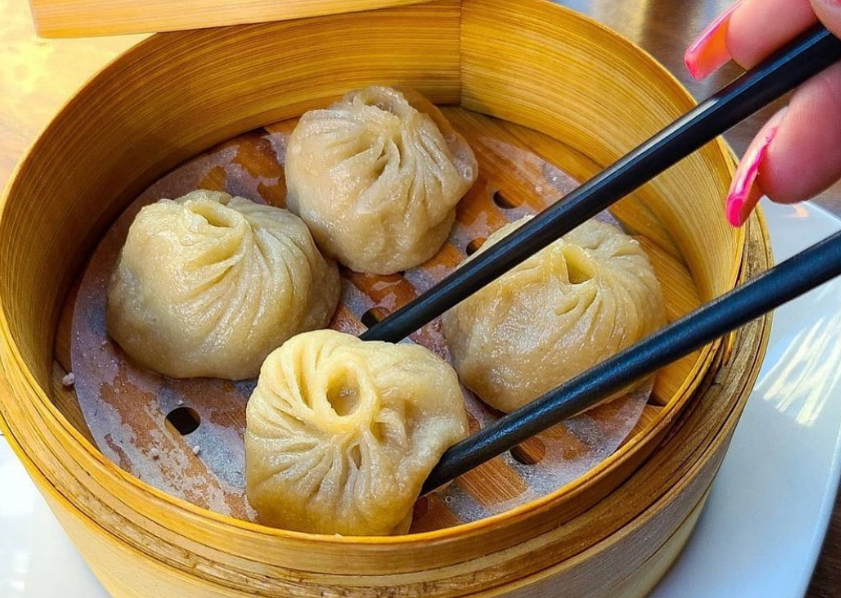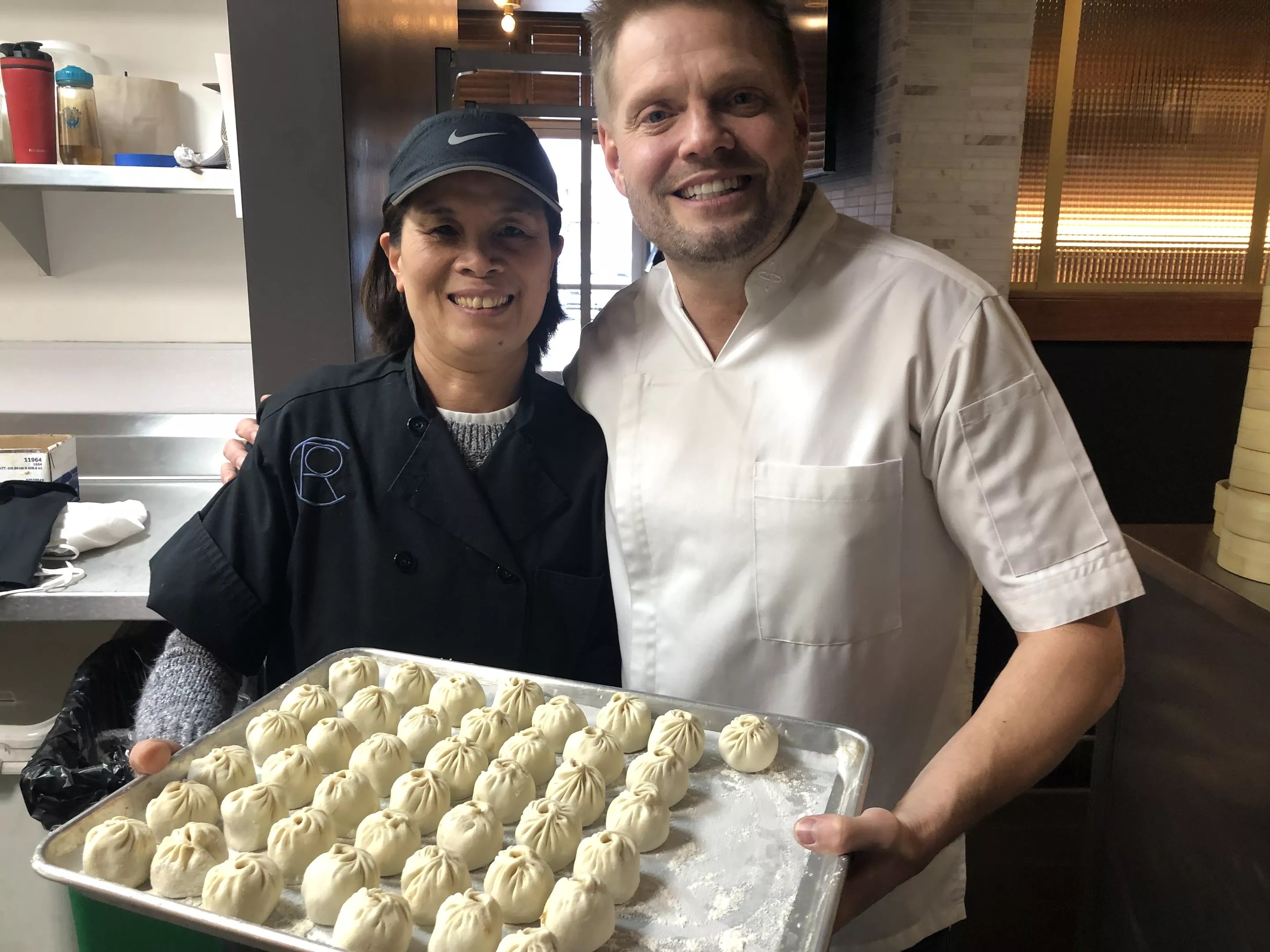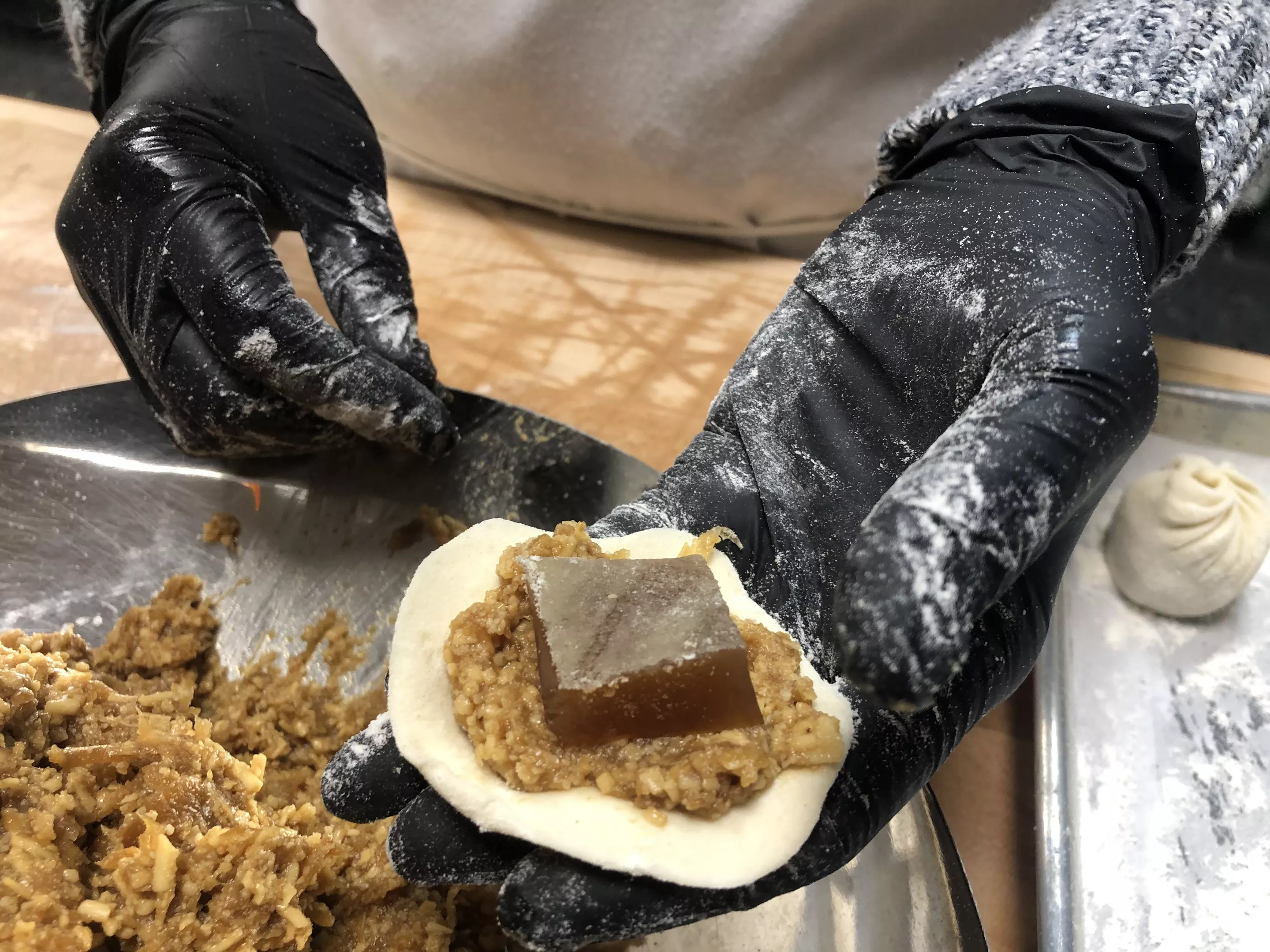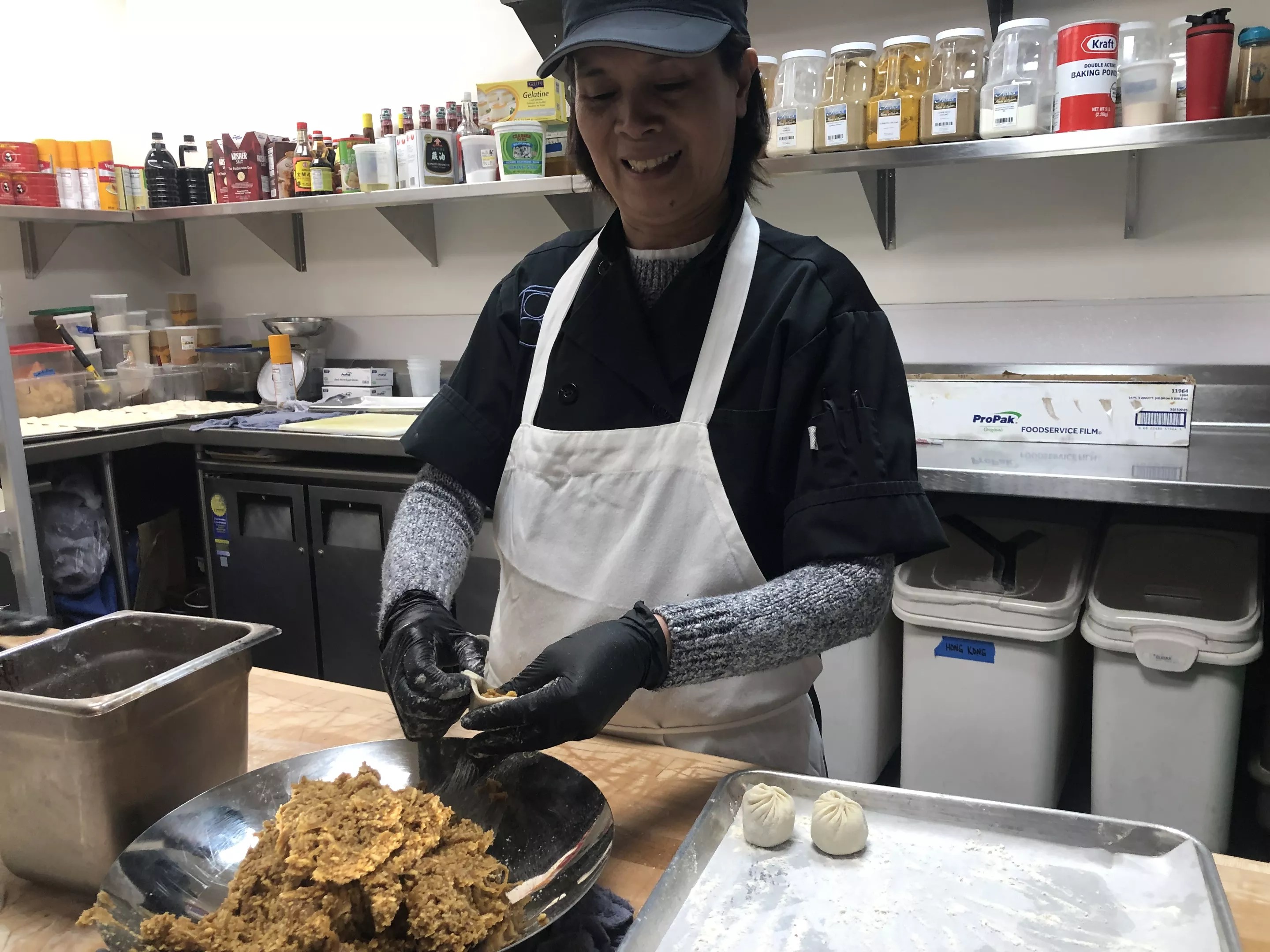
ChoLon/Instagram

Audio By Carbonatix
In the city’s ever-evolving food scene, some dishes have made a particularly memorable mark. In this series, we’re digging into the stories behind these signature dishes and breaking down how they’re made. Last week, we highlighted Restaurant Olivia’s French onion ravioli. This week, another French onion-filled dough takes center stage.
As one of the hottest local food trends of 2024, dumplings are having a moment in Denver.
It’s easy to see why. Dumplings allow for almost endless variations of fillings, flavors and textures. The meticulous hand-pleated wrappers drizzled with brightly colored sauces and eye-popping garnishes are highly Instagrammable. And as a shared plate, they’re perfect for groups of dumpling veterans and novices alike.
Not to mention when done right, they’re really, really good.
So perhaps it should come as no surprise that when chef Lon Symensma put his French onion soup version of soup dumplings on the menu at the original ChoLon Modern Asian Bistro when it first opened downtown in 2010, they proved to be an immediate and lasting hit. Since then, ChoLon has expanded to Sloan’s Lake and recently debuted an outpost at DIA. Symensma also added an offshoot, YumCha, which closed its downtown outpost this week but also has a location in Central Park. The French onion soup dumplings remain a staple at all.
“I didn’t know that it was going to be something that stayed on the menu forever,” says Symensma, “but this was the one that I started on day one, and it just stuck.”
Symensma is planning to roll out a lineup of new dumpling flavors for the upcoming Lunar New Year on January 29. The YumCha Central Park location is also hosting a dim sum-making series called Do Sum Dim Sum – the next class, on January 19, is sold out, but look for more coming soon.

Lon Symensma (right) with head dim sum chef Michelle Xiao.
Antony Bruno
What inspired ChoLon’s French onion soup dumplings?
While Symensma may use traditional Chinese techniques to make his soup dumplings, his choice of French onion soup for the filling is decidedly not standard. Neither is serving Chinese dumplings in a Vietnamese-themed restaurant. But there is a certain logic to it.
“ChoLon is actually named after a market built by the French in the Chinese district of Saigon,” says Symensma. “So I was like French-Chinese-Vietnamese, and it just kind of tied all together.”
But the secret behind it all is a petite Chinese woman named Michelle Xiao, a dim sum master whom Symensma met while working at Buddakan in New York. Before he convinced her to join the team in Denver in 2019, Symensma would send his dim sum chefs to Xiao in New York to train. Once she made the move to the Mile High, she took over the entire dim sum program and has run it ever since.
“It was a great technique that Michelle and I spent a lot of time working on at Buddakan in New York City,” says Symensma. “Soup dumplings were kind of a thing at that restaurant. Just like here, they were always the top sellers.”

The secret to getting soup in a dumpling is to chill the stock into a gelatin cube.
Antony Bruno
How ChoLon’s French onion soup dumplings are made:
Exactly how a liquidy soup could get stuffed into a dumpling wrapper has remained a mystery for many diners over the years, particularly those experiencing the delicacy for the first time. Is the soup frozen and then wrapped with the dumpling dough? Is the soup injected inside?
Symensma chuckles at some of the creative theories he’s heard. But in reality, the construction is a simple, straightforward process that employs basic kitchen science.
Getting the soup dumpling “broth” into the dumpling requires making an aspic. When making stock, the bones being simmered release gelatin into the liquid which, when chilled, solidifies like Jell-O. Chefs often amplify this process with actual sheets of gelatin for a firmer, more stable aspic.
When wrapping soup dumplings, chefs use cubes of aspic combined with whatever other filling is desired (in this case, caramelized onions). The dumplings are then chilled again to retain their consistency. Upon service, the buns are steamed in the familiar circular bamboo container, which both hydrates the wrapper and melts the aspic into a warm, flavorful, comforting broth.
This, of course, requires several steps…
The Stock
When ChoLon first started making soup dumplings, the stock was made the traditional way – roasting beef bones and simmering them with carrots, onions and celery for over 24 hours to extract all the flavor and gelatin.
Once the volume of dumplings required increased to serve more restaurants, Symensma needed to do something different. The amount of stock the team was making meant using hundreds of pounds of beef bones that simply took up more oven and refrigeration space than was possible to reasonably accommodate.
Now, ChoLon uses a popular veal demiglace concentrate to make sixty gallons of stock at a time. “It’s about consistency,” Symensma notes. “I think finding efficient ways to tighten up the process and using science to help us reduce costs is better than reducing stocks and depouillaging [skimming] and straining it through three China caps and reducing it again.”
Once the stock cools down, gelatin is added before it’s chilled in sheet pans and then cut into squares.

Michelle Xiao and her team hand-wrap around 5,000 dumplings each production day.
Antony Bruno
The Onions
Five bags of onions – about 250 pounds – are sliced and left to slowly caramelize overnight for twelve hours, a technique Symensma picked up while working at the three-star Jean-Georges in Manhattan. “After the liquid from the onions releases, you’re essentially just stewing them in their own water until all that concentrates the sugar,” he notes.
Once the onions are reduced, an equal amount of shredded Gruyère cheese is added to create the filling.
The Wrapping
On dumpling-making days, Xiao and a team of nine to ten other hand-selected Chinese women (and only women, Xiao firmly points out) stand side by side at a wooden island rolling out portions of housemade dumpling dough, filling it with the cubed stock and onion filling, and deftly pleating the dough closed with the traditional eighteen folds.
On a typical production day, the team churns out some 5,000 dumplings in about eight hours. That’s less than a minute per dumpling per person, which (if you’ve never tried hand-filling and pleating a dumpling yourself) is absolutely breakneck speed. Sometimes the team makes up to 10,000 dumplings a day.
“Very busy,” Xiao says, smiling and nodding.
For more information about ChoLon and YumCha, visit cholonconcepts.com.